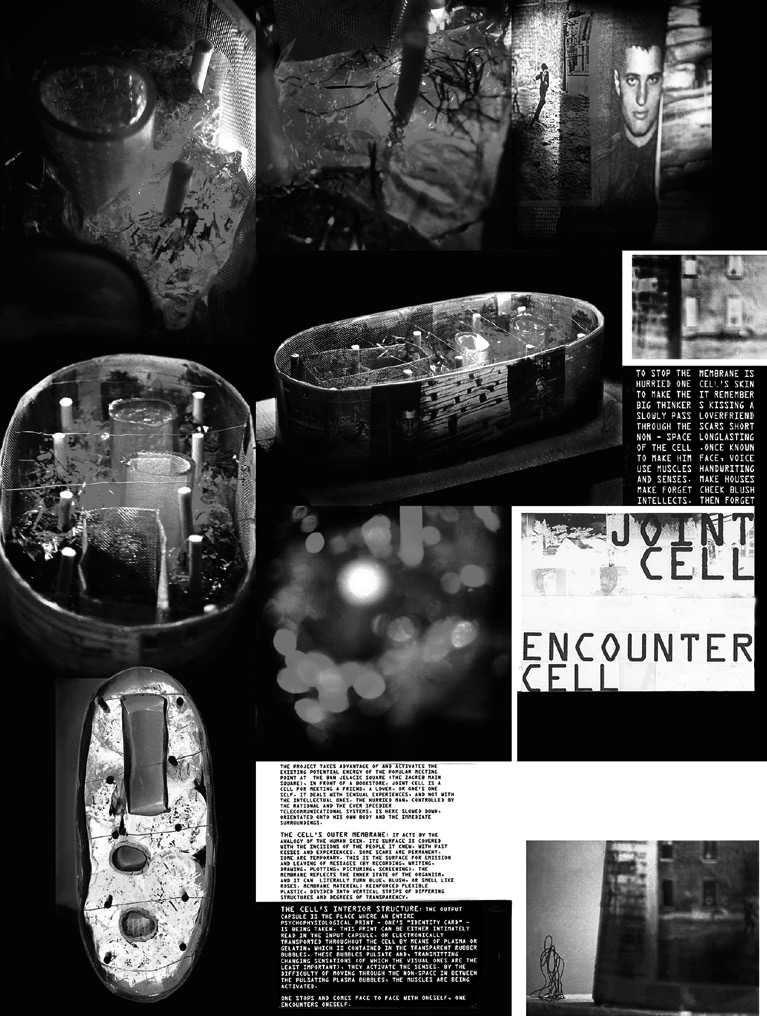Phenomenology of a Transformative Encounter
Downloads
DOI:
https://doi.org/10.51588/eaaeacp.73Keywords:
border, transition, phenomenology, relation, inside-outsideAbstract
Learning is a life-long process of growth and transformation through personal experience. Learning, like creation, takes place in relation. Life happens in the interval of matter. In the magnetic field of an active void— the space-time interval of change — a new form of life is created. Intention is to explore the incentive for knowledge production dynamics in the education of architects through a lens of relational phenomena. The key stimulus for production of knowledge is a transformative encounter with the dissimilar ‘Other’. The process of learning architecture is examined through the phenomenology of perception as the epistemologically most suitable apparatus. Experience of the inside-outside relation in spatial perception of architecture is compared with the one in psychoanalytical dynamics. Winnicott’s seminal concept of ‘transitional space’ is juxtaposed with a dynamic experience of transgressing porous architectural boundaries — both being analogs of the learning process.
How to Cite
Published
Issue
Section
License
Copyright (c) 2020 Lovorka Prpić

This work is licensed under a Creative Commons Attribution 4.0 International License.
References
Bachelard, G. (1994). The Poetics of Space (orig. La poétique de l’espace 1958). Beacon Press.
Cache, B. (1995). Earth Moves (Terre meuble). The MIT Press.
Csikszentmihalyi, M. (1996). Creativity: Flow and the Psychology of Discovery and Invention. Harper Perennial.
Csikszentmihalyi, M., Seligman, M. E. P. (2000). Positive Psychology: An Introduction. “American Psychologist”. American Psychological Association, 55(01): 5-14
Ellsworth, E. (2005). Places of Learning: Media, Architecture, Pedagogy. Routledge.
Emerson, R. W. (1993). Self-Reliance and Other Essays. (orig. 1841). Dover Publications.
Freire, P. (1989). Learning to Question: A Pedagogy of Liberation. Continuum, New York.
Freud, S. (1919). “The Uncanny” (“Das Unheimliche”), in: The Standard Edition of the Complete Psychological Works of Siegmund Freud, XVII. The Hogarth Press, London.
Gardner, H. (2006). Changing Minds. Harvard Business SchoolPress, Cambridge.
Glissant, É. (1997). Poetics of Relation (orig. Poétique de la relation. Gallimard, 1990). University of Michigan Press.
Hertzberger, H. (1985). Introduction, in: Vu de l’interieur ou la raison de l’architecture (ed. Nouvel, J.). Biennale de Paris: Architecture, Paris.
Hill, J. (2003) Actions of Architecture: Architects and Creative Users. Psychology Press.
Klee, P. (1953). Pedagogical sketchbook (orig. Pädagogisches Skizzenbuch. Transl. S. Moholy-Nagy. Bauhaus, 1925). Faber and Faber, London.
Maslow, A. H. (1971). The Farther Reaches of Human Nature. Viking Press, New York.
Merleau-Ponty, M. (2013). Phenomenology of Perception (orig. Phénoménologie de la perception, 1945). Routledge.
Mezirow, J. (2000). Learning as Transformation: Critical Perspectives on a Theory in Progress. Jossey-Bass Publishers, San Francisco.
Ochsner, J. K. (2000). Behind the Mask: A Psychoanalytic Perspective on Interaction in the Design Studio. Journal of Architectural Education 53(4):194-206.
Pedler, M., Shih-Wei, H. (2014). Unlearning, Critical Action Learning and Wicked Problems, in: Action Learning Research and Practice, Action Learning Research and Practice, Vol 11.
Pérez-Gómez, A. (2006). Built upon Love: Architectural Longing After Ethics and Aesthetics. MIT Press, Cambridge, Massachusetts.
Rank, O., (1989). Art and Artist: Creative Urge and Personality Development. orig. 1932. W. W. Norton.
Rushdie, S., as quoted in lecture by Juhani Pallasmaa: “Artistic Generosity, Humility and Expression: Reality Sense and Idealization in Architecture”. Faculty of Architecture, Ljubljana, 20.11.2007.
Schinaia, C. (2016). Psychoanalysis and Architecture: The Inside and the Outside. Karnac, London.
Schön, D. A. (1987). Educating the Reflective Practitioner: Toward a New Design for Teaching and Learning in the Professions. Jossey-Bass Publishers, San Francisco.
Sperber, E. (2016). Entering and Exiting, in: Psychoanalysis and Architecture: The Inside and the Outside, ed. Schinaia, C.,. Karnac, London.
Stierli, M. (2018). Montage and the Metropolis. Yale University Press, New Haven / London.
Taylor, E. W. (2008). Transformative Learning Theory, in: New Directions for Adult and Continuing Education. 119, Wiley Periodicals.
Thoreau, H. D. (1854). Walden. Ticknor and Fields, Boston.
van Eyck, A. (2008). Aldo van Eyck, Writings (ed. V. Ligtelijn, F. Strauven). SUN, Amsterdam.
Vella, J. (2002). Learning to Listen, Learning to Teach: The Power of Dialogue in Educating Adults. Jossey-Bass.
Winnicott, D. (2005). Playing and Reality. Routledge.
Woods, L. (2009). Architecture School 102, February 6th 2009 [https://lebbeuswoods.wordpress.com/2009/02/06/architecture-school-102/]
Woods, L. (2015). Slow Manifesto: Lebbeus Woods Blog (ed. C. Jacobson). Princeton Architectural Press, New York.
Zohar, D., Marshall, I. S. Q. (2000). Spiritual Intelligence, the Ultimate Intelligence. Bloomsbury Pub Ltd.





